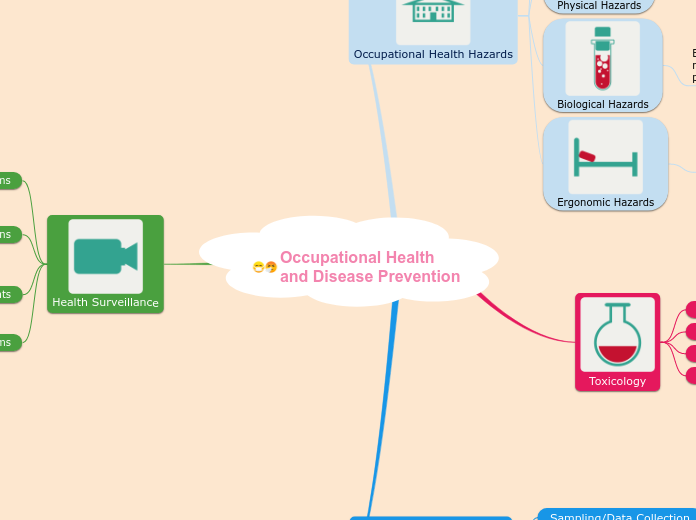Occupational Health and Disease Prevention

Occupational Health Hazards

Chemical Hazards
Fumes, dust/fibres, smokes, mists, gases, vapours

Physical Hazards
Noise, temperature, illumination, vibration, radiation

Biological Hazards
Bacteria, viruses, fungi and moulds, mites, insects, parasites, plants, animals

Ergonomic Hazards
For example, seating quality, etc.

Toxicology
Inhalation
Absorption
Ingestion
Injection

Risk Evaluation and Control
Sampling/Data Collection
Area Monitoring
Personal Monitoring
Spot or Instantaneous Sampling
Monitoring Equipments
Air sampling pumps
Gas monitors
Sound level meters
Noise dosimeter

Health Surveillance
Health Surveillance Programs
Added Level of protection for workers.
Medical Examinations
May include urine sampling, blood sampling, chest x-rays, pulmonary lung function testing, and audiometry (depending on workplace).
Timing of Health Assessments
Pre-placement assessments, Regular and periodic assessments, post-employment assessments.
Occupational Health Teams
Professionals who have roles to play in the prevention of injuries and illnesses at the workplace.
